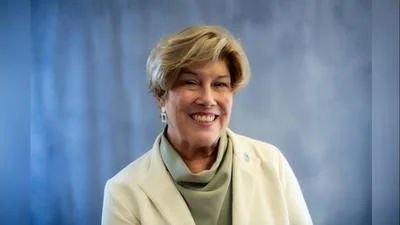Stan Lynall Managing Director, Venture Investments, OSF Ventures | Official Website
Stan Lynall Managing Director, Venture Investments, OSF Ventures | Official Website
A new digital tool designed to improve the diagnosis of migraines is being developed by a team at the University of Illinois College of Medicine Peoria (UICOMP) and OSF HealthCare. The application, known as MIGRO (migraine referral optimization), aims to help primary care and other frontline healthcare providers identify migraine patients more quickly and accurately.
Dr. Hrachya Nersesyan, a headache neurologist and director of the headache clinic at the OSF Illinois Neurological Institute in Peoria, co-developed the app. He noted that time constraints often prevent primary care providers from thoroughly assessing patients for migraine. "Well, they have to deal with 55 different problems, all at the same time, and the time constraint is a significant barrier in properly obtaining the history of the headache to be able to correctly and accurately diagnose, not just migraine, but also its sub-types, and decide what to do about that," Dr. Nersesyan said.
Migraine is diagnosed based on symptoms and patient history rather than laboratory tests or imaging. This reliance on clinical assessment means that diagnosis can depend heavily on a provider’s expertise and available time. Migraines are among the most common disabling headaches and are considered disorders of the central nervous system. Symptoms can include sensitivity to light or sound, nausea, vomiting, mood changes, and other disturbances even outside headache episodes.
An analysis conducted in 2022 reviewed 150 randomly selected patients referred to OSF's headache program. It found that primary care providers correctly identified migraine types only about half of the time and rarely defined subtypes accurately due to incomplete documentation regarding headache characteristics.
"Some of them, it took five, eight, even 10 years to even being diagnosed and receiving the treatment. We had a couple of patients that mentioned their headaches over 20 years ago and just 20 years later (they) were able to be finally diagnosed with the proper type (of migraine) and be introduced to treatment," Dr. Nersesyan added.
To address these issues, MIGRO uses a decision-tree algorithm based on current International Classification of Headache Disorders guidelines. The app leads patients through self-directed questions about their symptoms and headache patterns. In minutes, it generates a summary for healthcare providers’ review.
The app also includes safeguards to flag potentially serious conditions requiring urgent attention and can reliably identify medication overuse headaches—a frequent cause for headaches becoming chronic.
Testing at OSF Illinois Neurological Institute with over 300 patients showed that MIGRO outperformed referring providers in diagnosing headache types—especially for identifying migraine subtypes and medication overuse headaches. For example, while clinicians did not recognize any cases of medication overuse headache among referrals in one sample group, MIGRO identified this condition in 65% of cases.
The next phase will involve validating MIGRO in primary care settings across OSF HealthCare facilities—including rural sites where specialist access is limited. Dr. Nersesyan stated: "Because a majority of the migraineurs can be managed with very simple medications and interventions as long as they have the right diagnosis and the right treatment and they don’t necessarily need to see a headache neurologist or any other headache specialist—they can be very well managed by primary care providers."
Support for this study comes from a Community Health Advocacy grant provided by OSF HealthCare together with University of Illinois Chicago. The app’s digital development has been led by teams within OSF Digital Innovation Development who are working on refining language clarity so users from diverse educational backgrounds can understand it easily; integration into clinical workflows is also planned.
The research team expects primary care testing will begin by late 2025; if successful validation occurs in these settings, there are plans for broader public release thereafter.
"It allows and gives the ability to providers, in a fairly short period of time to hit all the key question marks and points that one needs to come to the diagnosis of migraine or to say, ‘Well this headache is not a migraine,’ or to define between different types of migraine that exists out there," Dr. Nersesyan said.





 Alerts Sign-up
Alerts Sign-up